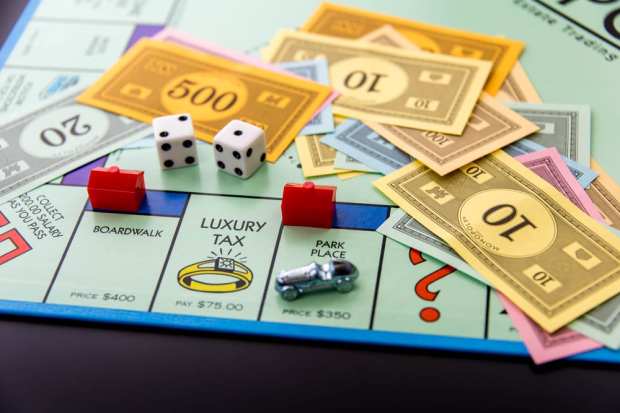Can Digital Upgrades Save Monopoly (And Other Board Game Classics)?

The holiday season isn’t only about retail and payments. It’s about family and friends – and killing time with those relatives and pals. And that means this is the time of year for board games to shine.
Yes, board games. On the cusp of 2020, board games remain relevant, and may even be enjoying a renaissance. As one recent report stated, board game sales in the U.S. grew by 28 percent in 2017, per the NPD Group, a market research company – and global sales increased to $9.6 billion in 2016 from $9.3 billion in 2013, according to the market research group Euromonitor International.
And board games – whether analog or digital – are no doubt gaining popularity as many people decide to spend more time at home, thanks to all the connected commerce and streaming entertainment options available there. As PYMNTS research documents, the home has become the consumer’s connected commerce command center. Indeed, more than three-quarters of U.S. adults made a purchase while going about their day-to-day activities – commuting, cooking, cleaning, watching TV, even taking care of the kids. Connected devices make shopping part of the everyday consumer experience.
But the digital revolution has touched all parts of life, and that includes this particular and longstanding form of recreation. Board games would seem to fit into the new digital and connected home.
“Some people prefer having the physical assets, but others find them to be more trouble than they’re worth,” reads a treatment of the topic from TheGamer. “That’s why some game developers have adapted board games into video games. The core concept is intact, but the help of everything stored digitally can make things more flashy and manageable.”
Digital board games have a longer history than most might realize — assuming one redefines “digital” to include relatively low-tech affairs from a good generation ago. After the microprocessor was launched into mainstream consumer society in the 1970s, things changed for a host of industries, including gaming. “Even the humble board game couldn’t avoid its reach,” reads a treatment from PC World, “receiving an electronic computerized upgrade courtesy of inexpensive microcontrollers like the Texas Instruments TMS100, which first appeared in 1975.”
Submarines and Crayons
According to that history, 1977 brought the launch of Code Name: Sector from Parker Brothers, considered the “first mainstream American board game to feature a computerized electronic component.” The TMS100 enabled players to keep track of the submarines in the game, even though players had to use crayons and rulers to plot those vessels’ paths.
Next came games such as Electronic Battleship, Dark Tower and, in 1982, the “Paymaster” version of Monopoly – the first version of that famous board game with a digital component, which in this case was a “computerized device” that handled dice rolls and other basic tasks of the game. “Its primitive interface – which consisted of a handful of LEDs and a small speaker – confused players and limited its appeal,” PC World explained. “Still, it set a precedent for Monopoly add-ons, which continue to emerge to this day.”
The granddaddy of all board games is also keeping up with today’s latest digital and retail technology – in this case, voice. The newest version of Monopoly is called “Monopoly Voice Banking.” What makes it stand out from earlier versions – and what probably makes it most interesting to PYMNTS readers – is that it gets rid of all that Monopoly paper money in favor of a voice-activated banker in the center of the board that keeps track of players’ transactions, in a reflection of the hot retail trends of going cashless and relying on voice-activated devices.
That Monopoly banker, being electronic and neutral, supposedly also prevents human mistakes and keeps players from cheating. Depending on your own personal preferences when it comes to Monopoly, that could be a good thing or a serious negative. No, this new Monopoly is not nearly as sophisticated as the voice-activated devices sold by the likes of Amazon and Google. But this new version of the classic game shows how board games in general are keeping up with the times and trying to hold their own in the 21st-century digital age.
The Future of Games
So what’s next for board games?
For starters, expect even more board games to have an online or mobile component, allowing people to play by themselves or with other, distant players. Digital Scrabble provides a strong example of how traditional, old-fashioned board games keep current in this digital era. Even with such advances, though, expect non-digital board games to keep thriving, at least if current trends hold.
Even science has weighed in favor of non-digital board games. According to a recent summary from Science Daily, “People who play games – such as cards and board games – are more likely to stay mentally sharp in later life, a study suggests. Those who regularly played non-digital games scored better on memory and thinking tests in their 70s, the research found.”
That may be true, but make no mistake: Board games are indeed embracing the digital culture.
